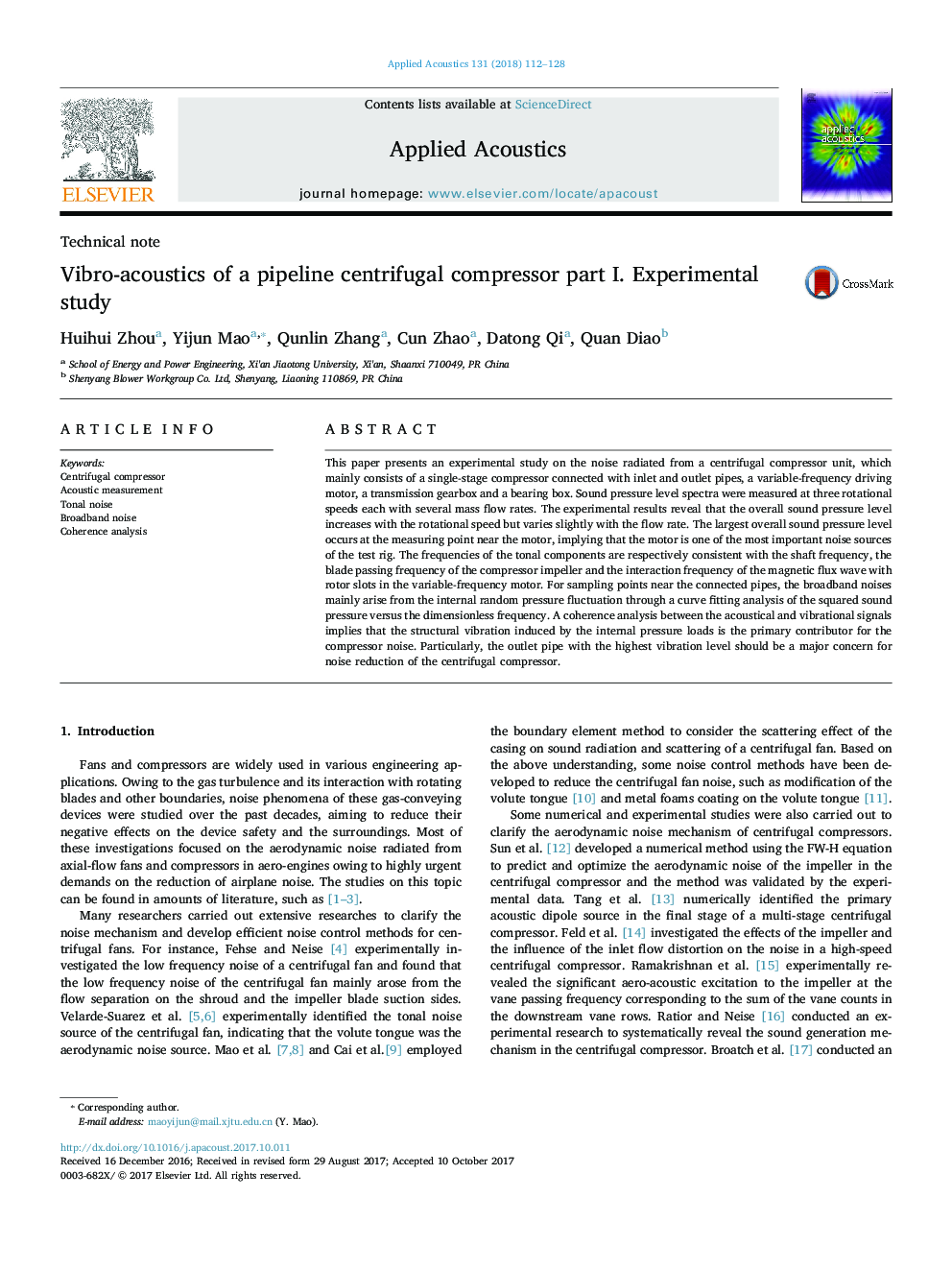| Article ID | Journal | Published Year | Pages | File Type |
|---|---|---|---|---|
| 7152403 | Applied Acoustics | 2018 | 17 Pages |
Abstract
This paper presents an experimental study on the noise radiated from a centrifugal compressor unit, which mainly consists of a single-stage compressor connected with inlet and outlet pipes, a variable-frequency driving motor, a transmission gearbox and a bearing box. Sound pressure level spectra were measured at three rotational speeds each with several mass flow rates. The experimental results reveal that the overall sound pressure level increases with the rotational speed but varies slightly with the flow rate. The largest overall sound pressure level occurs at the measuring point near the motor, implying that the motor is one of the most important noise sources of the test rig. The frequencies of the tonal components are respectively consistent with the shaft frequency, the blade passing frequency of the compressor impeller and the interaction frequency of the magnetic flux wave with rotor slots in the variable-frequency motor. For sampling points near the connected pipes, the broadband noises mainly arise from the internal random pressure fluctuation through a curve fitting analysis of the squared sound pressure versus the dimensionless frequency. A coherence analysis between the acoustical and vibrational signals implies that the structural vibration induced by the internal pressure loads is the primary contributor for the compressor noise. Particularly, the outlet pipe with the highest vibration level should be a major concern for noise reduction of the centrifugal compressor.
Related Topics
Physical Sciences and Engineering
Engineering
Mechanical Engineering
Authors
Huihui Zhou, Yijun Mao, Qunlin Zhang, Cun Zhao, Datong Qi, Quan Diao,
